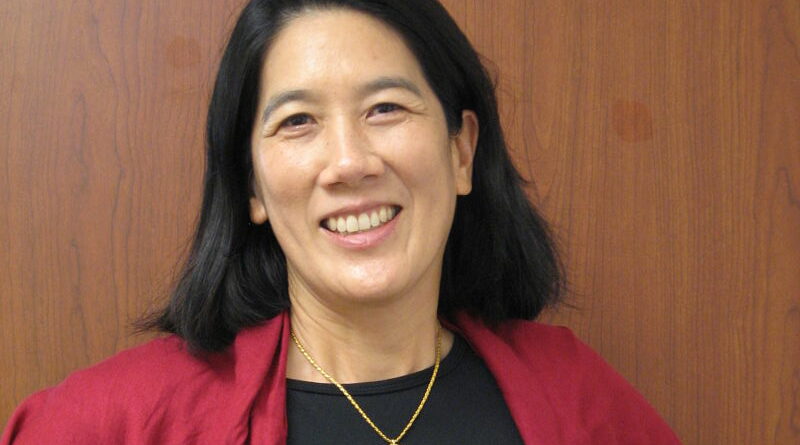Technology Adoption: A Call for Back-to-the-Basics Approach
By Valerie Fong, MSN, RN, Executive Director Regional Clinical Informatics – CNIO & Rick Davis, MBA, Executive Director IS Strategic Partner, Providence St. Joseph Health
The average age of a registered nurse in the United States is close to 50. Several projections and analyses of the current nursing workforce indicate the supply and demand for qualified nurse professionals is already facing shortfalls in the range of 200,000 as we approach the year 2020. Nursing schools have been struggling to meet the growing needs during a time also when the healthcare demands of the baby boomers – the fastest-growing generation in the United States that is classified as the demographic of individuals born between 1946 and 1964 – continues to tax overall health care resources. While there are more innovative strategies being created to change the methods and venues of how health care is delivered (e.g. population health, virtual visits), most remain aspirational at best if we are unable to provide the needed nursing professionals who perform hands-on direct care to deliver that care. Many health care delivery systems may never be able to catch up to the actual nursing workforce demands. While they will not directly increase the actual numbers of working nurses, technologies can help extend the professional capabilities of the existing workforce by decreasing nursing time spent in non-direct patient care activities such as documentation and managing communications and increase nurse energy and attention to caring for the patient – as long as the technology itself does not exhaust the nurse energy into caring for the technology.
One study conducted across over 30 hospitals and thousands of medical-surgical nurses revealed that only 20% of a nurse’s time is available for direct patient interaction.
Addressing the nursing shortage by increasing the capacity of nursing schools and the actual number of nursing school graduates is a long-term approach to help ensure that there are enough numbers of nurse professionals to care for the increasing health care demands of our populations. A shorter term approach that can be done at the local health care organization level is to identify and implement strategies that address the way nurse professionals are equipped to do their work. An area of possibility is to increase the time capacity of nurses to deliver quality nursing care through the use of technologies. One study conducted across over 30 hospitals and thousands of medical-surgical nurses revealed that only 20% of a nurse’s time is available for direct patient interaction. The other 80% is consumed by documentation, medication administration and coordination of care (e.g. contacting other physicians and other health care team members for a response). For the majority of nurses, increasing the percentage of direct patient interaction time can potentially improve nurse job satisfaction and retention, patient satisfaction, and the quality and safety of patient care. For example, mobile technology such as an integrated hand-held device the size of a smartphone can reduce the amount of time nurses spend in routine care documentation, enable more timely patient alarm indicators, and improve efficiencies of both the health care team and patient-nurse communications.
How much time are we talking about? Let’s look at the following scenario as an example. In the acute setting, a nurse logs into the electronic health record roughly 30 times in a 12-hour shift. The log-in process involves keyboarding a username and password and then waiting for the application to load and be ready. The wait time for each log-in is about 30 seconds. While 30 seconds per log-in for one nurse in one shift is an insignificant amount of time (900 seconds), it is a substantial sum of 9 million seconds when multiplied across a nursing workforce of 10,000 nurses. A mobile technology solution that decreases the log-in process to 5 seconds or less can potentially increase a single nurse’s time capacity equivalent of 750 seconds and as applied to a workforce of 10,000, would potentially increase capacity to 366 nurse full time equivalents. Certainly, this can help to extend the current nursing workforce time and focus on direct patient care activities uniquely delivered by way of the full scope of nursing practice licensure.
The rapid explosion and evolution of technology continue to stream into the health care industry. Although nursing has an innovative history and most nurses are generally excited to be the first to apply the latest technologies into their daily practice (e.g. electronic documentation, barcode scanning, and infusion Smart pumps), new tools tend to be introduced by organizational IS departments into the clinical space as if they are a simple ‘plug and play’. In the care delivery setting, information technologists have an IS-centric view (e.g. “machine” – data center consolidation, cloud based processing, web services) and want to stay relevant by introducing tools that are trendy and cutting edge; they are not the experts in the clinical workflow. Nurses are focused on the person and relationship aspects of care delivery and do not want to have to think about IS – they just want tools that will help get them through their day, on time, with a minimum of technology-related frustrations. As they are not the technology experts, nurses may be unaware of what integrated technology capabilities can do to improve their practice efficiencies.
One approach in managing this technology-practice polarity is for IS and nursing stakeholders to establish a trusting partnership, dialogue and engagement with the shared goal of not simply creating 1:1 problem-to-technology solutions. An IS survey of needs does little to support the alignment of clinical communication solutions if used in isolation of and out of context with the complexities of nursing practice workflow. Co-creating technology roadmaps for solutions that move beyond ‘in-the-moment’ transactions to more strategic and integrated approaches will eliminate a common problem of a nurse having up to four different devices in use to carry out routine clinical communications that support patient care delivery and interactions with patients, family, providers, and other care team members.
Technology will continue to be a fundamental enabler of future care delivery models. To be truly transformational, mobile technology solutions need to advance beyond those that enable task engagement to a more dynamic and integrated workflow engagement. In the end, technology roadmaps developed jointly with close partnerships between nurses and IS that leverage collective strengths and knowledge can help to increase the time capacity nurses have to care for the patient and not for the technology and maximize the professional capabilities of the shrinking nursing workforce.



